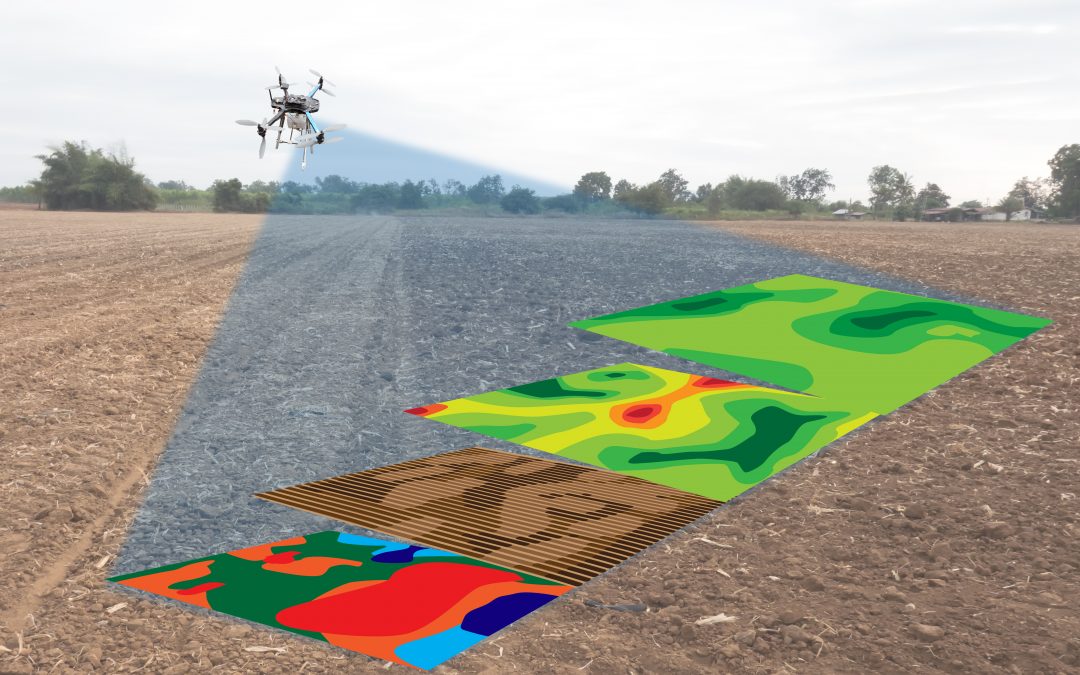For the past 5 years and more, we at Sensors & Software have received a continual and growing stream of inquiries about mounting GPR on unmanned aerial vehicles (UAVs, most commonly called drones). The opportunity of merging these technologies is truly exciting with so many challenging applications out there to solve. Given this interesting and challenging opportunity, you will not find a lot of promotion of the idea from our truly creative GPR innovation team. Why is this the case??
Normally we push hard to see advances such as this occur; unfortunately, this area of development faces the double whammy of two strictly regulated technologies. As responsible technology providers, we have to work within the spirit of the law and not promote highly risky and unlawful activity.
Having spent many years (decades) developing, installing and flying airborne geophysical instrumentation, I know the benefits of airborne surveying. I also know the serious and tight regulatory rules governing airborne deployment of all kinds. The concept of using UAVs is not new; in fact, while working with Tony Barringer (Barringer Research) and Ivan Hvoric (founder of GEM Instruments) in 1979, we were all very excited about mounting sensors on UAVs. We have compared notes over the years as various platforms have appeared and the dreams have come to fruition. (See the GEM website showing drone deployment of magnetometers ).
The current state of the drone world is a major challenge for regulatory agencies. While there is public demand to permit unfettered use of this technology, the aviation administrations of all countries must assure licensed manned aircraft operation, address the safety of the public and maintain security in their airspace. In an ideal world, regulators would prefer drones not to exist at all because of the challenges that they create.
While writing this commentary, news reports just reinforced the above comments. A drone incident at Gatwick Airport (London, UK) shut this busy airport down for a day, creating travelling chaos. Drones were spotted above the airport and around the control tower. Whether this was a mischievous prank or a security threat, the public was endangered and greatly inconvenienced. At the same time, new regulations for drones were announced in newspapers and on TV by Transport Canada focusing on limiting size, weight, flying height, and urban usage. Bottom line, civil aviation authorities around the world will be continually working to tighten and restrict drone use.
GPR is also a regulated technology. As discussed in prior blogs, the focus on regulating GPR has been to limit radio frequency emissions from ultra-wideband GPR devices. During the lobbying efforts to get approval for GPR from the Federal Communications Commission (FCC) in the United States, the greatest opposition to ultra-wideband GPR came from, of all places, the Federal Aviation Administration (FAA, USA) and NASA. Similar concerns were voiced in other jurisdictions by civil aviation authorities. While regulated GPR operation is permitted, all the approvals came with caveats to review the rules if interference and widespread use occurred. All regulations regarding GPR strictly forbid airborne deployment. Off-the-ground operation is limited to a height of less than one meter. Fortunately, no reviews have occurred as there have not been any reported interference incidents.
Putting the two technologies together creates a case of double jeopardy. The blatant disregard for the regulatory environment by some GPR users is extremely worrying. People posting web messages extolling the use, and some vendors actually promoting the use of drone GPR devices, indicates the seriousness of the situation. All it will take is a major incident and the GPR community will be facing regulatory review which could undo the efforts of many of our committed community members who have worked so hard to make GPR legally available.
The GPR community needs to be aware of the challenges these GPR deployments create and be prepared to call out inappropriate behavior.
GPR users must remember these facts.
- GPR regulations are not static; the current rules are subject to review and revision.
- Current regulations were crafted based on the argument that GPRs must operate on or close to the ground. (Ground coupled operation minimizes emission into the air and this logic was a major factor that allowed the current regulated use of GPR).
- Inappropriate use causing an interference disruption could trigger a review of the GPR regulations with the possible banning of GPR devices to the detriment of all users and manufacturers.
We all would benefit if the merging of GPR and drone technology occurred. To achieve this outcome, demonstrated use and benefits of the technologies will be needed. To achieve these demonstrated benefits, use cases must occur. Going forward, the GPR community that engages in this type of activity must act in a professional and intelligent manner. Key messages are:
- Understand and communicate to all parties that airborne use of GPR is not legal in most jurisdictions.
- Work with regulatory bodies as much as possible to get understanding and permission for experimental work.
- Risks are lowest for experiments conducted in remote, underpopulated areas.
- Report the results so that the deployment method benefit is clear (i.e. the results could not have been obtained without the use of a drone). This approach will enhance lobbying efforts for legality in the future.
- Call out parties who experiment indiscriminately and promote airborne GPR usage without cautioning as to the illegality of the activity.

